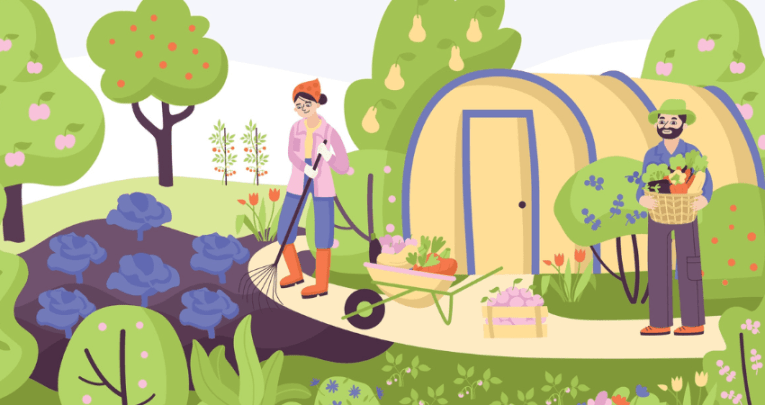Gardening in schools – How to fund greener school grounds

Getting the whole community involved in upgrading your school grounds is vital for green development in schools, says Anne-Marie Bolton…

Gardening in schools is so important. It fosters our pupils’ keen imaginations, helps them engage with learning, and improves their sense of wellbeing.
That is why, at Lessness Heath Primary School, and The Primary First Trust more widely, we have looked to community organisations to help us develop our outdoor spaces and transform them into natural havens that will do exactly that.
Our top priority has been to cultivate spaces that:
- boost pupils’ mood
- enhance their lived experiences
- diversify their learning opportunities
Gardening in schools
Schools are a vital part of a community, and a community is a vital part of a school. There is a symbiotic relationship between the two, which benefits from being nurtured by both parties.
Fostering positive relationships outside of the school gates goes beyond cutting costs. These relationships can bring value through the sharing of knowledge, new experiences and different perspectives.
This is vital to developing pupils’ understanding of the world around them. It equally enriches the lives of those in our community.
Our community project started as a connection between one of our governors and a local gardener, Neil Moakes. He became our garden project lead to bring to life a redesigned green space.
New relationships grew from this one. Neil got to work contacting various community gardening groups. This included the Bexley Allotment community, Men in Sheds, and the West Kent Masonic Community.
Building our new garden
These community volunteers worked together, donating their time and expertise over the summer holidays to develop our science garden.
This included a revamp of our green space with new flower beds and plants. They re-built a space for our pupils to sit together in the garden. They also created a ‘bug hotel’, which attracts wildlife to the garden and facilitates various habitats developing.
Beyond building our new garden, these groups are now looking to begin imparting their gardening wisdom to our pupils through assemblies. Here they can discuss their experiences, demonstrate gardening techniques, and foster a love of the natural world.
Growth and learning
At Lessness Heath, we already knew from our successful Early Years setting that when pupils have access to outdoor environments they learn best.
Now we have a fantastic new and improved outdoor space in our primary school, we are seeing the benefits to pupils’ learning and wellbeing already.
Having a state-of-the-art outdoor space allows teachers to implement an experiential curriculum. For example, it supports pupils’ learning of science. They can see firsthand the lifecycle of a plant and the ecosystems that support the natural habitats.
Children enjoy learning outside. They find it fun, and can absorb and discover the natural world through their experiences of it. Pupils actively enjoying and engaging with their learning is vital to their ability to retain and develop their knowledge and understanding. It’s also essential for their wellbeing, which, in turn, helps their learning further.
Trending
Agency and empowerment
Another school in our trust, Springhead Park Primary School, has also utilised community links and opportunities to develop its green space.
The school received a financial donation to renovate the school grounds from Ebbsfleet Development Corporation, as the school was part of the Ebbsfleet development.
School leaders decided that pupils had to be at the heart of the decision-making process over how to best use this money to renovate their school grounds.
Following consultation, and the School Council meeting with architects, the architects and contractors put a plan in place to enact the pupils’ desire to create a space that would attract natural wildlife.
Pupils themselves planted the trees that will become the forest school. They created a pond with pond life donated by the local garden centre. They’ve also planted an orchard, and a rewilded area has bloomed with a variety of plants and flowers.
This was a community-focused project; harnessing the power of local companies and placing pupils and their ideas at the heart of decision making.
Not only has this helped to create a beautiful green space on the school grounds, but it has empowered pupils at Springhead Park to design the world they want to see.
This project gave them the agency to make decisions about how to shape the space, allowing them to take collective responsibility and ownership of the area, and build a sense of community.
Gardening in schools: Making it work
Maintain links and connections within your local community outside of the school gates
Facilitate networking for staff and governors, and reach out to organisations within your locality; you’ll be surprised how often they’ll be happy to help!
Choose your time wisely
The school holidays are always the best time to get infrastructure projects completed, producing minimal disruption for pupils. As this is the case, it is important to engage with community groups about potential projects months in advance, to be able to confirm the work and get all necessary preparations completed in time. The beginning of the spring term is the ideal time to begin thinking about projects for the summer holidays.
Be realistic about what you can achieve and don’t bite off more than you can chew
If you are working with local volunteers and organisations, work out the scope of the project together, so that both parties are clear about what to expect and what to deliver.
Ann-Marie Bolton is headteacher of Lessness Heath Primary in Kent.











